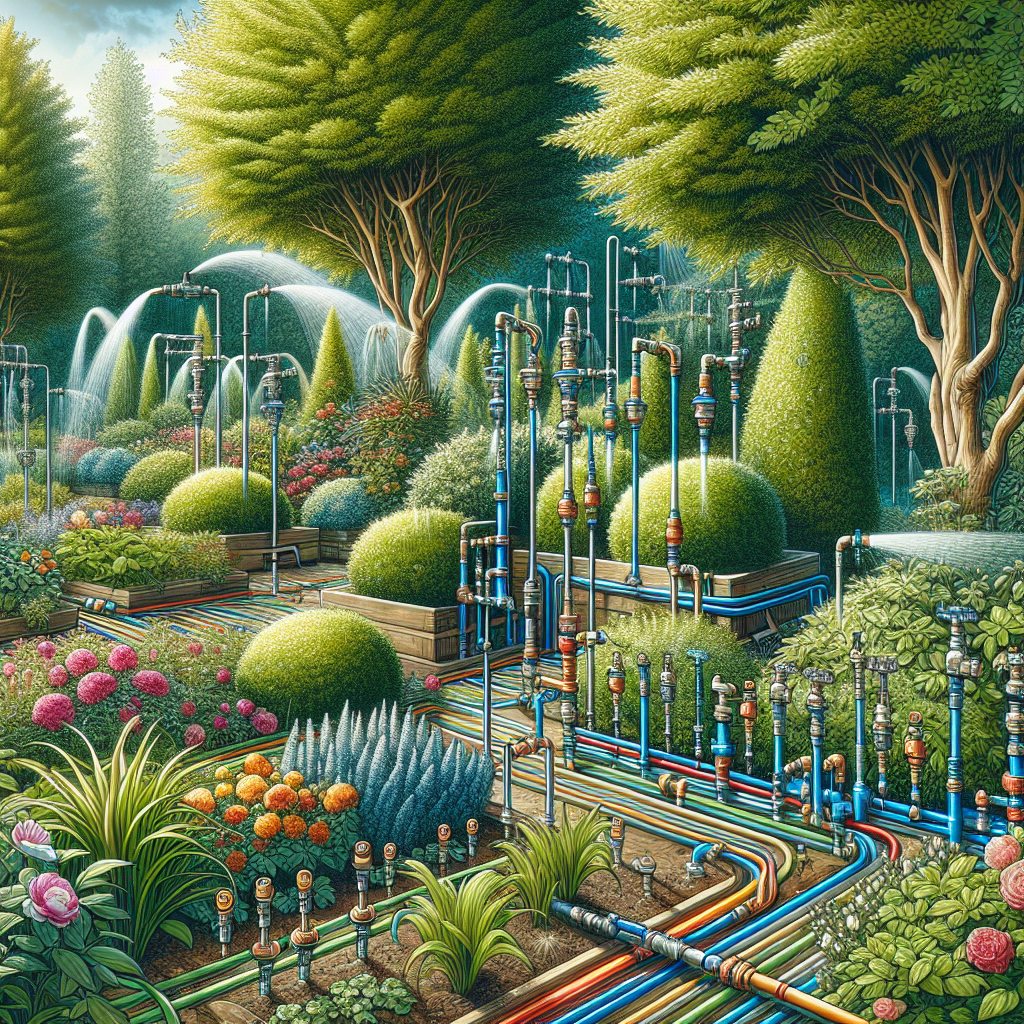As a homeowner who takes pride in their garden, you understand the importance of proper irrigation for the health and vibrancy of your plants. While manual watering methods like hoses and sprinklers can get the job done, they often lead to inconsistent watering, wasted water, and limited coverage. That’s where a professional-grade slow drip irrigation system comes in.
Slow drip irrigation systems deliver water directly to the root zone of your plants at a slow and steady pace, ensuring that each plant receives the precise amount of moisture it needs. This not only promotes healthier plant growth but also conserves water by reducing runoff and evaporation. In this article, we will explore the benefits of upgrading your garden with a professional-grade slow drip irrigation system and provide tips on how to choose and install one.
Benefits of Slow Drip Irrigation
1. Consistent Watering: One of the biggest advantages of a slow drip irrigation system is its ability to provide consistent watering to your plants. By delivering water directly to the root zone, you can ensure that each plant receives an adequate amount of moisture without overwatering or underwatering.
2. Water Conservation: Slow drip irrigation systems are designed to minimize water waste by delivering water slowly and precisely where it is needed most. This helps reduce runoff, evaporation, and oversaturation of the soil, ultimately saving you money on your water bill.
3. Healthier Plants: By providing your plants with a consistent supply of water at their roots, you can promote healthier plant growth and reduce the risk of diseases caused by overwatering or underwatering. Additionally, slow drip systems help prevent foliage from getting wet, which can lead to fungal infections.
4. Time Savings: Once installed, a slow-drip irrigation system requires minimal maintenance and saves you time on daily watering tasks. You can set timers to automate watering schedules based on your plants’ needs, giving you more time to enjoy your garden without worrying about its hydration.
Choosing a Professional-Grade System
When choosing a professional-grade slow drip irrigation system for your garden, there are several factors to consider:
1. Water Pressure: Make sure the system you choose is compatible with your water pressure levels. Some systems require higher pressure levels than others for optimal performance.
2. Coverage Area: Consider the size and layout of your garden when selecting a system. Choose one that provides sufficient coverage for all your plants while allowing for flexibility in adjusting watering zones as needed.
3. Durability: Look for systems made from high-quality materials that are designed to withstand outdoor elements like sunlight, rain, and temperature fluctuations.
4. Ease of Installation: Opt for a system that is easy to install without requiring specialized tools or expertise. Many professional-grade systems come with detailed instructions and step-by-step guides for DIY installation.
5. Compatibility with Accessories: Consider whether you want additional features like timers, moisture sensors, or adjustable emitters when choosing a system that is compatible with these accessories.
Installing Your Slow Drip Irrigation System
Once you have selected a professional-grade slow drip irrigation system for your garden, it’s time to install it following these steps:
1. Plan Your Layout: Start by mapping out the layout of your garden and identifying where each plant will be located within designated watering zones.
2. Gather Materials: Make sure you have all the necessary materials on hand before starting installation – including tubing, emitters, connectors, stakes,
3.tubing cutter,
4.dripper stakes,
5.and timer if desired.
4.Install Mainline Tubing: Begin by laying out the mainline tubing along the perimeter of each watering zone using stakes or clamps to secure it in place.
5.Attach Emitters: Attach emitters or drippers along the mainline tubing at appropriate intervals based on plant spacing requirements – typically 12-18 inches apart for most plants.
6.Connect Tubing: Use connectors or tees to branch off from the mainline tubing as needed to reach individual plants within each zone – ensuring there are no kinks or bends in tubing that could restrict water flow.
7.Test System: Once everything is connected properly,
turn on
the water supply
and test
the system
for leaks
and correct functioning.
Adjust
emitter flow rates
as needed
to ensure
each plant receives
adequate moisture
Maintaining Your Slow Drip Irrigation System
After installing your professional-grade slow drip irrigation system,
it’s important
to regularly maintain it
to ensure optimal performance.
Here are some tips:
1.Check regularly:
Inspect tubing,
emitters,
and connectors
for clogs,
leaks,
or damage.
Clean debris from filters
and replace any faulty components as needed.
Adjust seasonally:
Adjust watering schedules
based on seasonal weather changes
and plant growth patterns
to prevent overwatering
or underwatering.
Mulch:
Cover exposed tubing
with mulch
to protect it from UV rays
and reduce evaporation.
Winterize:
Drain
and store tubing indoors during winter months
to prevent freezing
and damage.
By upgrading
your garden
with professional-grade
slow-drip
irrigation
system;
you can achieve
healthier; more vibrant
plants; conserve
water; save time;
reduce maintenance;
requirements;
and enjoy
a lush outdoor
space year-round.
In conclusion;
Upgrading
your garden
with professional-grade
slow-drip
irrigation
system;
is an excellent investment
that pays off dividends
in terms
of improved plant health;
water conservation;
time savings;
and overall enjoyment
of ~your outdoor space.
By following
the guidelines outlined
in this article;
you can select;
install;
and maintain
a high-quality
slow-drip
irrigation
system
for
years
of healthy
garden
growth
ahead.
So go ahead
take ~that leap
into advanced
irrigation technology!













